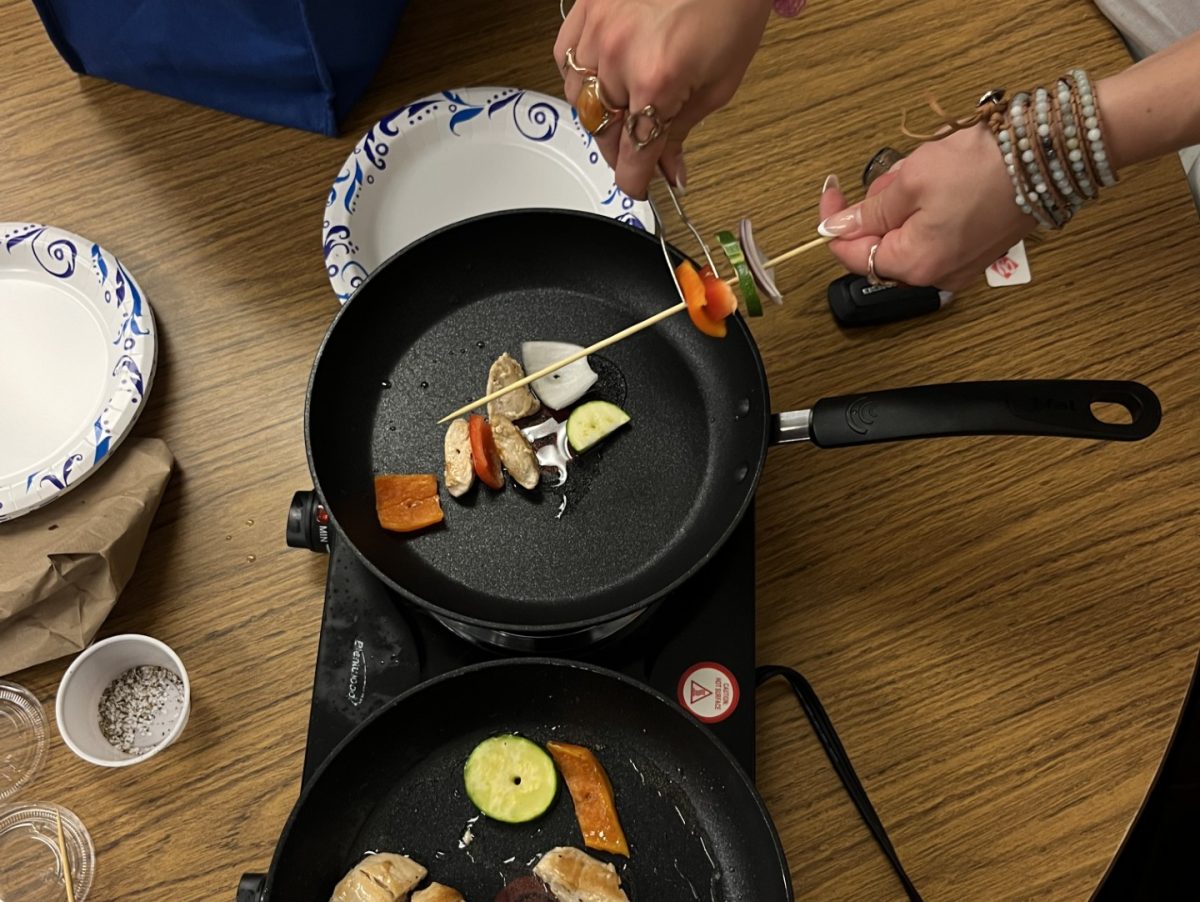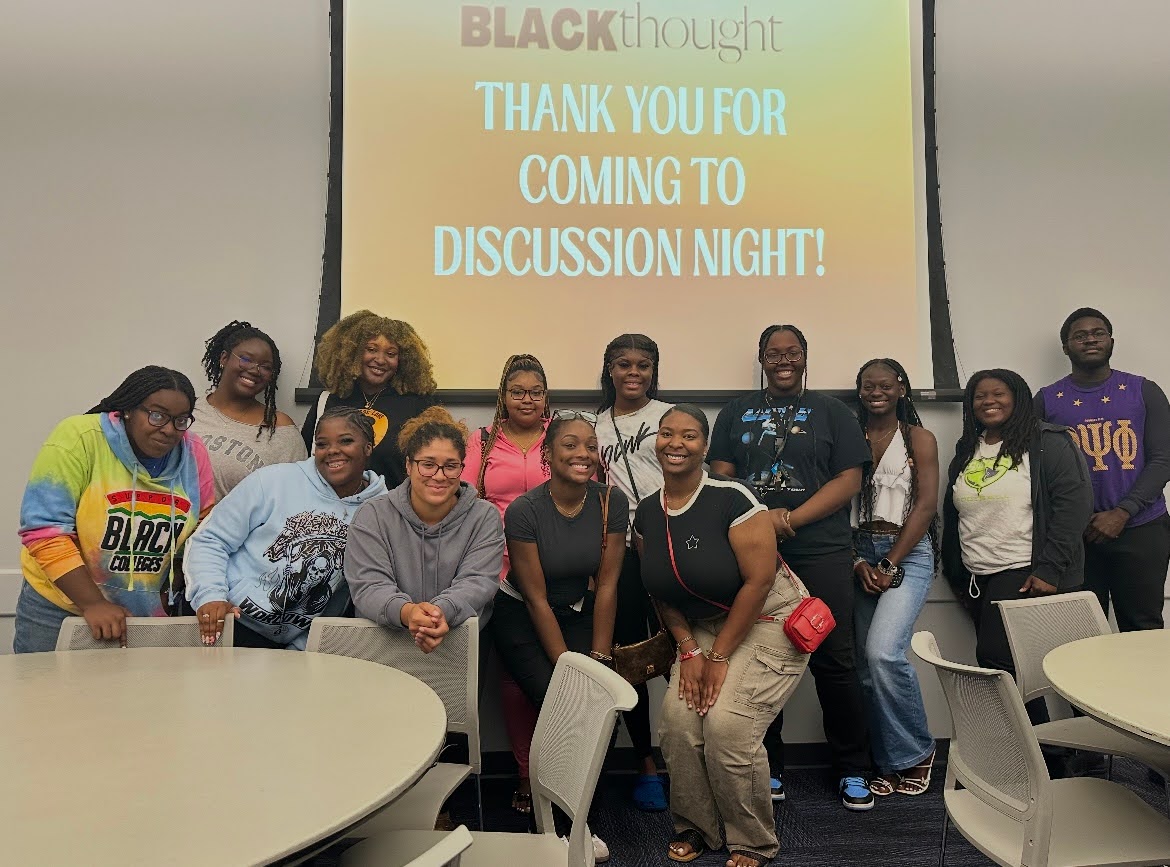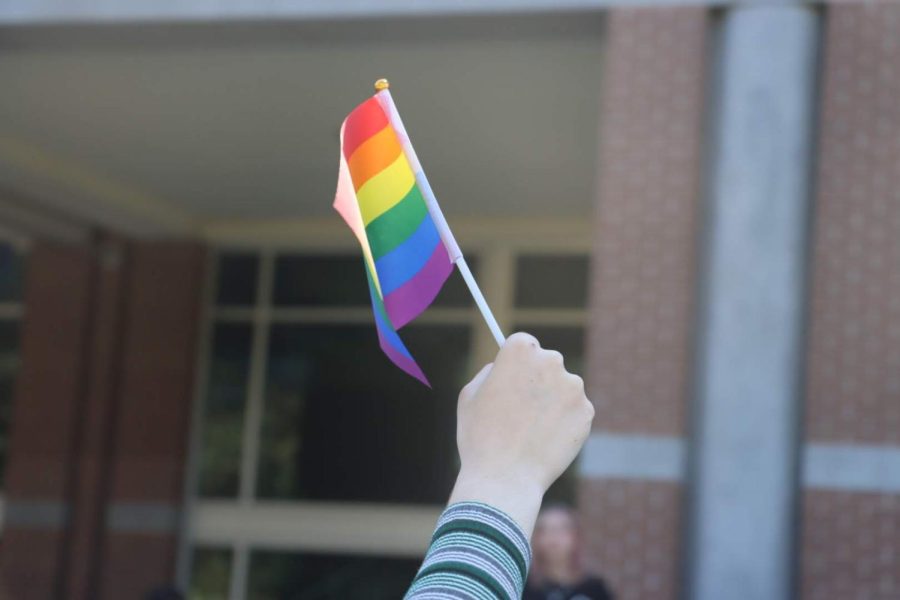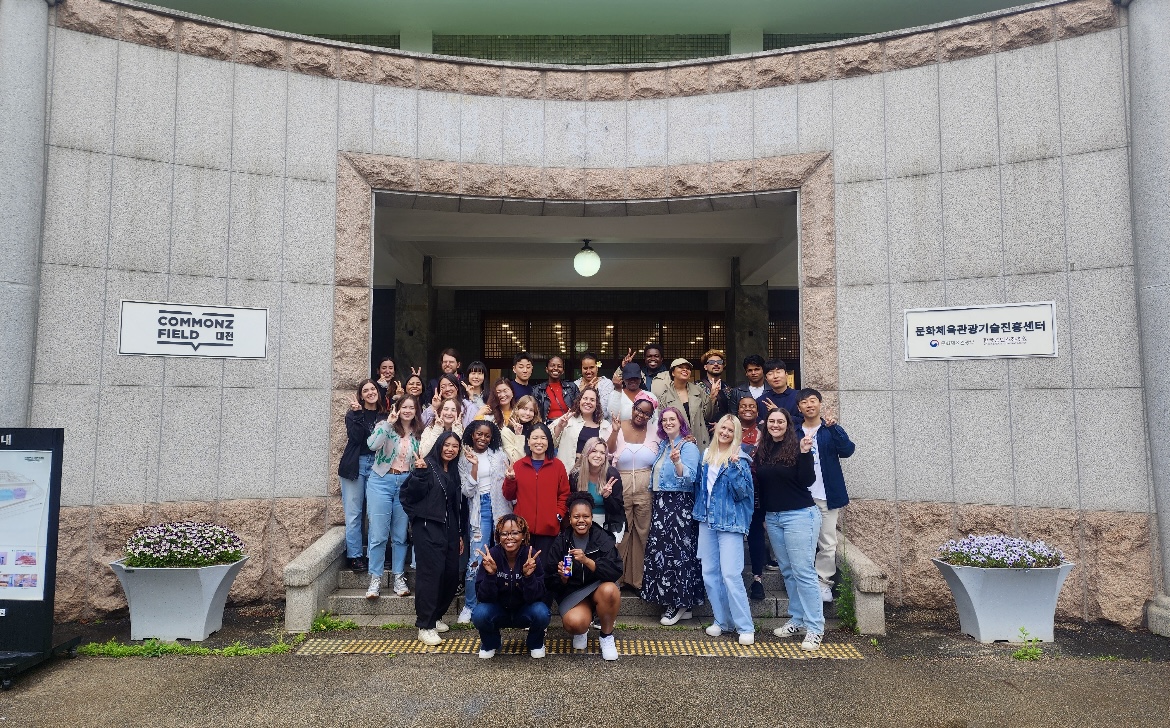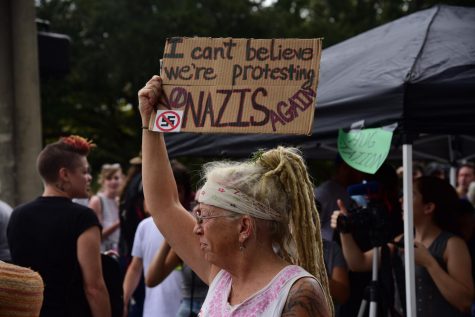
“Not in our town, not in our state, we don’t want your nazi hate,” chanted protesters rhythmically to the beat of drums. A mass of people, standing together in opposition to the presence of white nationalist Richard Spencer at the University of Florida, marched down Gainesville’s 34th Street towards the Phillips Center, where Spencer was to speak. A broad coalition of diverse interests, ideologies, and organizations, the group was the epitome of the proverb that the enemy of my enemy is my friend.
Liberals, socialists, communists, anarchists, and all shades of ideology ranging from the center to the far left were in attendance. Signs, most displaying pejoratives aimed at Spencer and other pundits on the right, cluttered the horizon as the crowd moved towards campus. I dashed alongside the mass as they advanced, looking to get footage of marchers holding a “No Nazis at UF” banner. The Spinnaker team and I were accompanied by dozens of other journalists, all hoping to capture the atmosphere along with first inevitable outbreak of violence as tensions rose.
Lining the streets were hundreds of state troopers, highway patrolmen, and other personnel from an array of state law enforcement agencies, accompanied by members of the local Gainesville PD and Alachua Sheriff’s Office. Ironically enough, clad from head to toe in their beige uniforms and wielding billy clubs, they resembled Hitler’s brownshirts of the 1920s and ‘30s. It was imagery that undoubtedly struck the opposition and vaguely fascistic, giving them more material to work with in their collective chanting. Barricades and checkpoints were at every street corner along with a list of items prohibited within the demonstration zone. Every conceivable measure was in place for the moment that everyone knew was coming—the first punch to be thrown.
The demonstrators clustered in the street. The rallying calls of the protesters became increasingly more intense and aggressive as anticipation grew for the event. Everyone there, seething with passion, wanted to give the man of the hour a piece of their mind, and maybe even their fist. For many, it was probably the latter. It wouldn’t be the first time Spencer has been popped in the face by an enraged Antifa crony. Many hoped that wouldn’t be the last. “Any time, any place, punch a nazi in the face,” yelled the crowd in unison. All signs pointed towards an eruption of violence.
We're being told the men in white polos are controlling who enters the Phillips Center where Spencer will be speaking. #SpenceratUF pic.twitter.com/6uKVIW8NlA
— Tiffany Salameh TV (@tiffanysalameh) October 19, 2017
A handful of men sporting white polo shirts, sunglasses, and Hitler Youth haircuts appeared. Naturally, they were members of Richard Spencer’s National Policy Institute, a rather innocuous-sounding white nationalist think tank based near Washington, DC. Spencer’s henchmen dispersed and signalled to the police that they were ready to begin allowing people into the venue. The crowd shifted and people began entering the event one-by-one after a security patdown by officers and approval by the NPI members. It would seem that they thought they could filter out the undesirables through this vetting technique. Although, given the crowd outside, it was fairly obvious that there would be a few disruptors to slip through the cracks.
“A few” would turn out to be an understatement. Spencer took to the stage only to be greeted by the screams of hundreds of students, effectively drowning out most of what he had to say. Every time he lifted the microphone to his mouth, the crowd would respond with a barrage of noise. “Go home, Spencer,” they roared. He retorted by scolding the students, criticizing them for what he believed to be childish and inappropriate behavior in the face of opposing ideas. “Do you not want to talk?” he pleaded. Outside, however, things were not so civil.
Randy Furniss, an unapologetic skinhead from Idaho, wandered over to the demonstration. Reminiscent of Ryan Gosling’s neo-nazi character in the film The Believer, he wore a t-shirt with several swastikas accompanied by red suspenders and a shaved head. The crowd quickly turned into a mob, enveloping Furniss in a sea of furious demonstrators. “F–k you, nazi scum!” they screamed in his ears. He continued walking, seemingly unphased by the threats of violence and wads of spit being projected towards him. A smirk spread across his face as he lightheartedly taunted several protesters. The smile quickly faded as a fist came hurdling towards his face, landing square on his jaw and temporarily paralyzing him. The offender, an unknown hooded man, scurried back into the mob. Several students pleaded for the violence to not continue. Furniss trudged onward whilst being shoved and intimidated, blood trailing down from his lip and onto his chin.
Photo Series: After speaking for about 5 minutes with each other, a nazi and nazi protestor hugged it out. 📷 Tiffany Salameh/UNF Spinnaker pic.twitter.com/isTAJaGIB0
— Tiffany Salameh TV (@tiffanysalameh) October 20, 2017
Soon after, he encountered a black protester later identified as Aaron Courtney. “Why don’t you like me, dog?” Courtney asked the skinhead. Courtney embraced Furniss, choosing to meet his presence with love rather than hostility. I couldn’t believe what I was witnessing. In rapid succession, I had seen two tactics that appear to divide the liberal from the illiberal left wing. The first man chose to meet an opposing ideology with direct action rather than a peaceful exchange, while the second responded in a seemingly Christlike manner.
Furniss continued down the road, still flocked by the horde of angry students. Julius Long, another black protester, decided to step in. He began a dialogue with Furniss as the crowd continued to rage on, while some even attempted to stop them from communicating altogether. “He doesn’t want to hear you out!” one protester shouted at Long. The two were ushered to a police barricade where officers shoved back the crowd and made way for the skinhead to escape the stampede of people heaving towards him. “They’re gonna hug it out now!” one demonstrator shouted mockingly, wearing a hat reading “Killuminati.” Long and Furniss continued their discourse.
https://twitter.com/tiffanysalameh/status/921099085477810181
It takes a lot to make one feel even an ounce of sympathy for a nazi, and much more to compel someone to have a discussion with them. What I saw that day, the multitude of responses to the expression of extremist ideology, only begs the question of how we are to continue our civil discourse in the United States, or lack thereof. Given increasing polarization on all ends of the political spectrum, is violence the only way forward? Are we to allow ourselves and our society to devolve into a state of affairs analogous to that of post-WWI Germany, with nazis and communists fighting in the streets, vying for political influence? While peaceful discourse is alive and well, it is worrying that political violence on both sides continues to escalate, as the extremes of the left and right begin to show their teeth in the face of increasing hostility.
__
For more information or news tips, or if you see an error in this story or have any compliments or concerns, contact editor@unfspinnaker.com.




